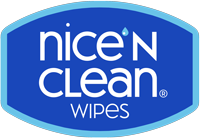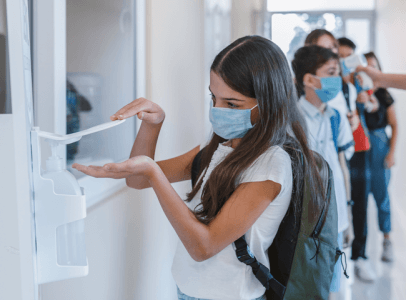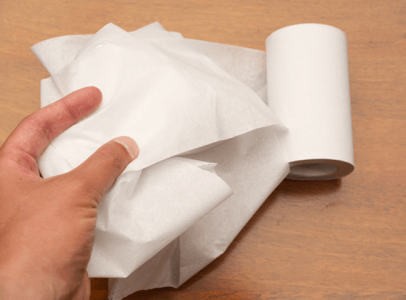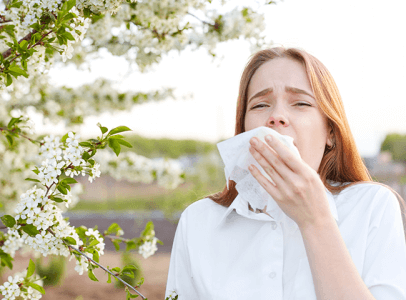Bacteria in Sponges: 3 Dirty Secrets You Should Know

It seems every day to the kitchen we trudge
To clean, disinfect, we work like a drudge
Scrubbing away at dirt, grime, and sludge
Now there’s germs on the sponge—and they just WILL NOT budge!
Can we really remove them? And how can we judge?
Instead, from now on, at the first sign of grunge
Take out the guesswork and just take the plunge!
Pick up a wipe—and throw out that sponge!
Poems might not be our area of expertise, but when it comes to killing bacteria and viruses, we’ve got you covered. In this article, we’ll take a look at 3 dirty secrets you may not know about how to clean sponges. Plus, we’ll share why disinfecting wipes are a better option when cleaning countertops, tables, bathtubs, and other things sponges are often used to clean.
Dirty Sponge Secret #1: Sponges are teeming with living bacteria
Germs. Microbes. Viruses. Bacteria. You’ve just cleaned your kitchen to get rid of them, and that’s a great thing. But if you used a sponge to scrub away at your countertops, cabinets, sink basin, and appliances, guess where those germs, microbes, viruses, and bacteria are now? The truth is, there can be spots on your kitchen sponge that are just as bacteria-filled as your toilet.
So, just how many bacteria does a sponge actually have? A 2017 study published in Scientific Reports found 362 different species of bacteria living in used kitchen sponges; 82 billion bacteria were living in just one cubic inch of space. And sponges don’t kill bacteria — they only collect them and give them a new place to live and breed.
From the study: “Kitchen sponges not only act as [a] reservoir of microorganisms, but also as disseminators over domestic surfaces, which can lead to cross-contamination of hands and food, which is considered a main cause of food–borne disease outbreaks.”
Dirty Sponge Secret #2: Even though they clean messes, sponges are hard to clean
Sponges are absorbent, textured, and gently abrasive—all the things that have us turn to them for cleaning spills and messes. Unfortunately, all those same attributes make sponges themselves really hard to clean. Kevin Sauer of Kansas State University, who has studied cross-contamination in the kitchen, says the problem with sponges is that they’re easy to ignore. “A lot of us have been brought up to grab that sponge because it takes care of the surface, cleaning what we see,” he said. “I don’t think sponges are the enemy, but they provide a great medium to grow bacteria.”
Is there a way to clean sponges that ensures you’ve disinfected them? The New York Times article, “Cleaning a Dirty Sponge Only Helps Its Worst Bacteria, Study Says,” points out that disinfecting sponges does not necessarily work. “Some people may think that microwaving a sponge kills its tiny residents, but they are only partly right,” the Times story reports. “It may nuke the weak ones, but the strongest, smelliest, and potentially pathogenic bacteria will survive.”
READ: Cleaning vs. Sanitizing vs. Disinfecting: Understand the Differences
Dirty Sponge Secret #3: They smell bad
Moraxella osloensis is the bacterium that causes dirty laundry to stink—and it’s often the bacterium that causes your sponge to eventually smell sour and foul. According to the Times article, “The odor is a compound produced by the bacterium’s metabolism. It eats fat. It excretes fat. And that fatty excrement stinks.”
When a sponge starts to stink, it’s a wise idea to throw it away immediately. Don’t try to clean smelly sponges. If anything, cleaning them with warm or hot soapy water could make them smell worse.
“Nobody would recommend hot, soapy water as a way to disinfect a sponge," says Jennifer Quinlan, a food microbiologist at Drexel University. “That could actually encourage the bacteria."
Disposable Wet Wipes: The Cleaner Alternative to Sponges
A better alternative to sponges are disposable wet wipes that are pre-moistened with a cleaning and disinfecting solution. Single-use wipes are better than sponges for cleaning countertops and other nonporous surfaces in your kitchen and bathroom. Nice ’N CLEAN® Disinfecting Wipes have been clinically shown to kill viruses* and bacteria** faster than other leading brands (3 minutes vs. 4 minutes). Our wet wipes contain a proprietary solution specially developed to clean, deodorize, sanitize, and disinfect hard, nonporous surfaces. Plus, they’re sustainably made with renewable plant-based fibers so you don’t have to feel guilty about throwing them out after one use. Instead, you can rest easy knowing you’re protecting your family from germs instead of spreading them around with a dirty sponge.
ALSO READ: Tips for Cleaning Your Entire House with Wet Wipes
Keeping your home clean has always been important, but never more so than right now. You need the right tools for the task. So throw out that sponge, and reach for a disinfecting wipe the next time you need to clean the bathtub, the kitchen table, and all the other hard surfaces you need to keep clean for your family to use and enjoy.
You can purchase Nice ’N CLEAN® Disinfecting Wipes at Costco warehouses nationwide.
*Effective against common cold virus caused by Coronavirus and common flu virus caused by Influenza A H3N2 Virus
**Effective against Escherichia coli (E. coli), Salmonella enterica (Salmonella), Staphylococcus aureus (Staph), Pseudomonas aeruginosa, Listeria monocytogenes (Listeria), Streptococcus pyogenes (Strep), Methicillin-Resistant Staphylococcus aureus (MRSA)
References
-
Microbiome analysis and confocal microscopy of used kitchen sponges reveal massive colonization by Acinetobacter, Moraxella and Chryseobacterium species. Scientific Reports. Volume 7, Article number: 5791 (2017). https://doi.org/10.1038/s41598-017-06055-9
-
Consumer Food Handling Practices Lead to Cross-contamination. Food Protection Trends, Vol 35, No. 1, p.36-48. International Association for Food Protection.
-
Cleaning a Dirty Sponge Only Helps Its Worst Bacteria, Study Says. The New York Times. August 4, 2017.
-
Sanitizing kitchen sponges. Michigan State University Extension. March 19, 2014.
-
Prevalence of Pathogens and Indicator Organisms in Home Kitchens and Correlation with Unsafe Food Handling Practices and Conditions. J Food Prot. 2017 Apr;80(4):590-597. doi: 10.4315/0362-028X.JFP-16-354.
-
So Your Kitchen Sponge Is A Bacteria Hotbed. Here's What To Do. NPR. Morning Edition. September 11, 2017.




